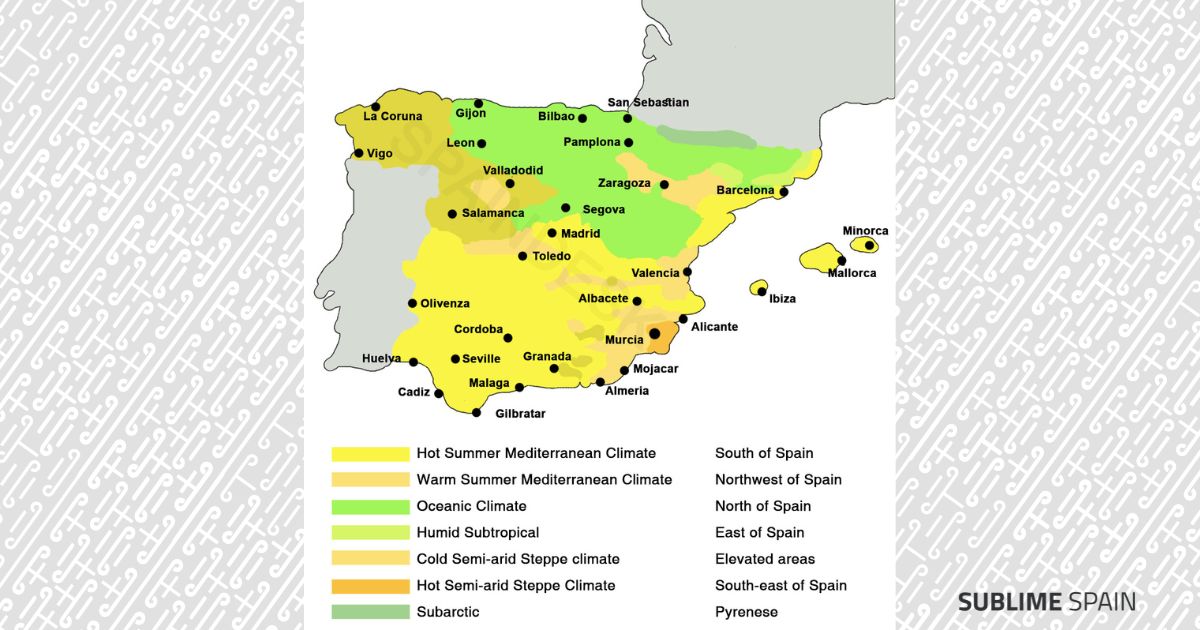Exploring the Seasons in Spain
Spain is a country known for its rich cultural heritage, vibrant cities, delicious cuisine, and stunning landscapes. But apart from these attractions, Spain also boasts a diverse climate that brings about four distinct seasons, each with its own charm and character. From the blossoming colors of spring to the sun-kissed days of summer, the golden hues of autumn, and the frosty landscapes of winter, Spain offers a wide array of experiences throughout the year. In this article, we will take a closer look at the four seasons in Spain, highlighting the unique features and activities that make each season special.
The seasons in Spain
Spain experiences four distinct seasons throughout the year, with each season offering its own unique charm. During the winter months of December to February, many regions in Spain, particularly in the northern and central parts, are enveloped in a chilly atmosphere, with snow-capped mountains providing a picturesque backdrop for winter sports enthusiasts.
Spring arrives in March, bringing with it a burst of colorful flowers and mild temperatures, perfect for strolling through the parks and gardens that come to life. Summer spans from June to August, with scorching temperatures and long sunny days that make Spain’s beaches and coastal areas a popular destination for sun-seekers and water sports enthusiasts.
Finally, autumn arrives in September, painting the landscapes with rich shades of red and orange as the temperatures start to cool down, providing a pleasant transition from the hot summer months to the cooler winter season. Overall, Spain’s seasons offer a diverse and dynamic climate that attracts visitors throughout the year.

Spring in Spain
If you’re looking for a Spain getaway, the spring season is the ideal season to visit. Starting March 20 and ending June 21 (in Central European Time), temperatures in sunny Spain gradually increase as the months go by. In March, average minimum weather can range from 37.4ºF to 60.8ºF, while May tenders between 55.4ºF and 82.4ºF -making it feel like summer. In many inland cities, spring is a great time to visit as temperatures can be slightly cooler than on the coast or in southern Spain. Moreover, expect light rains with humidity present but not too severe that’ll put a damper on your travels; mid-spring is especially inviting at its peak temps, so plan ahead if possible.
As the weather becomes increasingly beautiful, enjoy the sights of full green canyons, and orange blossoms in the Oranges Valley, and visit major cities like Madrid. For entertainment, head to Sevilla for its European Film Festival or to San Sebastian for its annual International Film Festival.
These are some great spots to explore:
- Madrid
- Córdoba
- Valencia
- Málaga
- Barcelona
Summer in Spain
The Summer months in Spain are considered the peak season for tourists as temperatures rise. From June 21 – September 23, expect hot days and warm nights with the average temperature at 86°F (30°C). Inland cities such as Madrid can get even hotter due to their proximity to Central Europe’s monsoon winds. Keep this in mind when packing your bags as you may need more breathable, lightweight clothing.
The North Coast enjoys the hot summer making it a top destination for beachgoers. Head to the Costa del Sol for some of the best beaches on offer and enjoy activities like sunbathing, swimming, snorkeling, and surfing during this time. The Canary Islands, located off the coast of Africa, is also a great destination to visit year-round- but particularly if you’re looking for warmer weather all year long as they experience average temperatures of 75°F (24°C).
Visiting Spain in the summer season allows you to take full advantage of the pleasant weather, sunny days, and mild waters. Northern Spain is generally more humid, with temperatures rising during the peak season.
If you’re looking for sultry Spanish summers, these are some great spots to explore:
- Costa Brava
- Cantabria
- Asturias
- Mallorca
- Cádiz
Autumn in Spain
In Central European Time, the Spanish Fall season begins on September 23 and ends on December 21. As summer fades away and Autumn creeps in with pleasant weather and cooler temperatures, the country becomes an inviting destination. The average temperature is still warm at around 68°F (20°C) and the days are still sunny and bright. Many beaches remain open, however, if you’re looking to stay away from the hustle and bustle of peak season – Autumn may be your ideal choice.
Expect less heat and humidity while still enjoying the blissful sunshine of the country. Spanish resorts thrive during the autumn season due to the mild weather, and many festivals still take place. September’s weather makes it feel like summer has just begun and fewer tourists lead to reduced prices. With temperatures that never exceed 27°C (81°F) and seas warmed up to 22-24 °C (72-75 °F), Autumn is a great time of year for swimming or beach activities, even into November. Check out the Seville European Film Festival, and the San Pedro’s Feast over this time of year. Wine tasting and festivals are also popular activities during the autumn months.
Some great spots to explore in Autumn are:
- Irati, Navarra
- Gorafe, Granada
- La Rioja
- Zaragoza, Aragón
- Gijón, Asturias
Winter in Spain
From December 21 to March 20, the winter season officially arrives in Spain. Although it has some of the best climate conditions throughout Europe, temperatures in cold winters can still be nippy, ranging from a low of 32ºF to a high of 60.8ºF. In northern parts and higher altitudes, you may encounter foggy days with rain often occurring between the Atlantic and Galician mountain ranges – yes, there is snow. So make sure you bring appropriate clothing during winter months.
Exploring the sun-soaked during Spain winter can be an unforgettable experience – it’s not as cold here compared to other northern European countries. With less precipitation in regions closer to the Atlantic Ocean, you’ll often find yourself under bright and sunny skies. January is considered the chilliest month, with temperatures ranging from 51.8°F to 55.4°F all around Spain; however, even then, visitors are sure to savor every ray of warmth this beautiful country offers them. Additionally, some of Europe’s best ski resorts are located throughout Spain’s majestic Sierra Nevada Mountains – a perfect winter destination.
If you are looking for a few recommendations on where to spend your winter holidays – some great places include;
- Granada, Canary Islands
- Vielha, Catalunya
- Formigal, Huesca
- Picos de Europa, Asturias
- Navacerrada, Madrid
A word from SublimeSpain
Overall, Spain is one of the most sought-after tourist destinations due to its unique blend of climates across the whole country. June to October is the best time to visit Spain; Spain’s beaches and resorts are bustling with vacationers taking advantage of the Mediterranean sun. But that is only part of what this country can offer; all year long, ski slopes are open for those who enjoy winter sports, and a variety of festivals take place in spring and autumn. Whether you’re looking for a beach getaway or an exciting adventure in the mountains, no matter the season, you can be sure that Spain has something to offer everyone. So get planning and enjoy all the best this breathtaking country offers.

